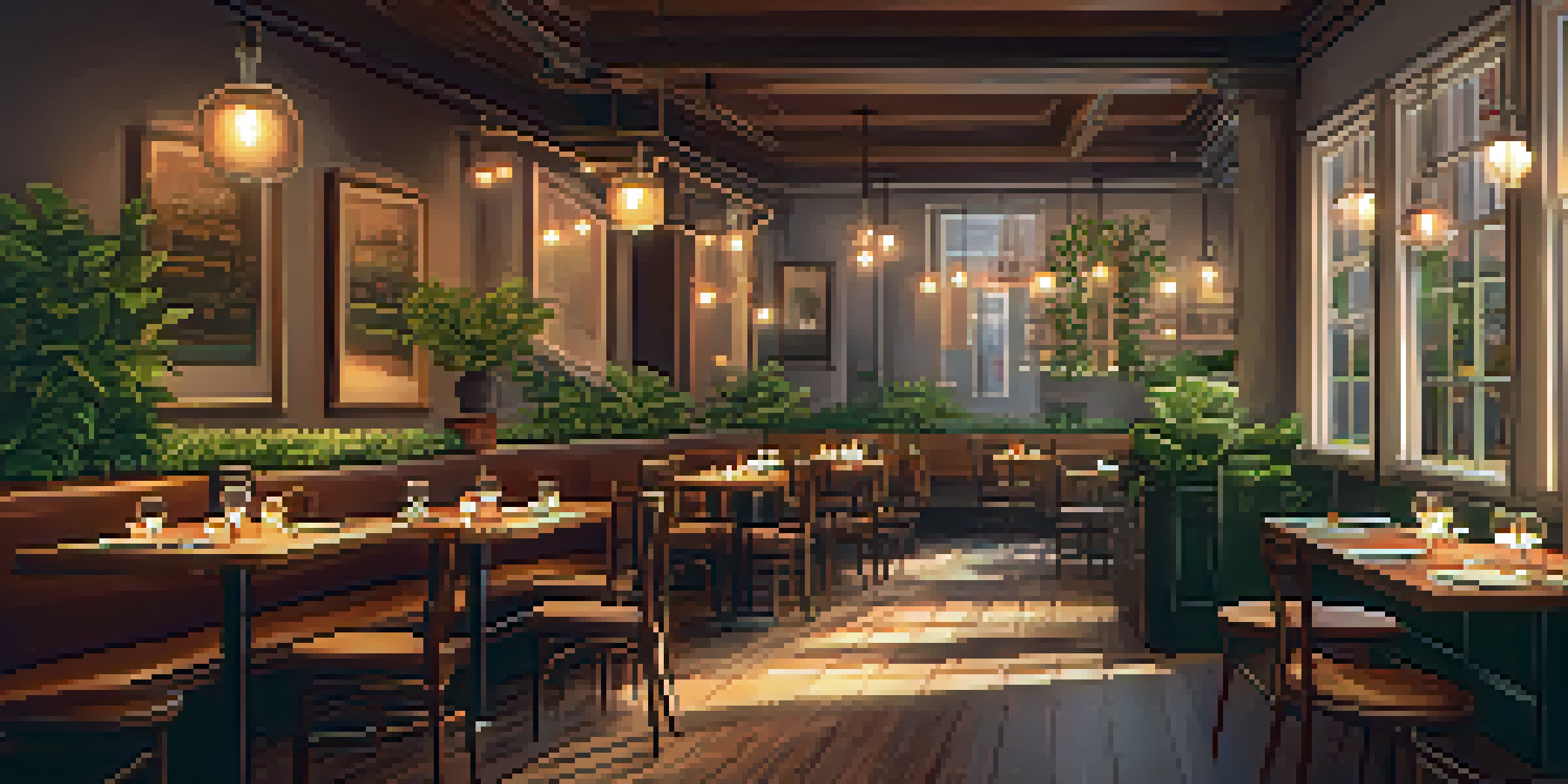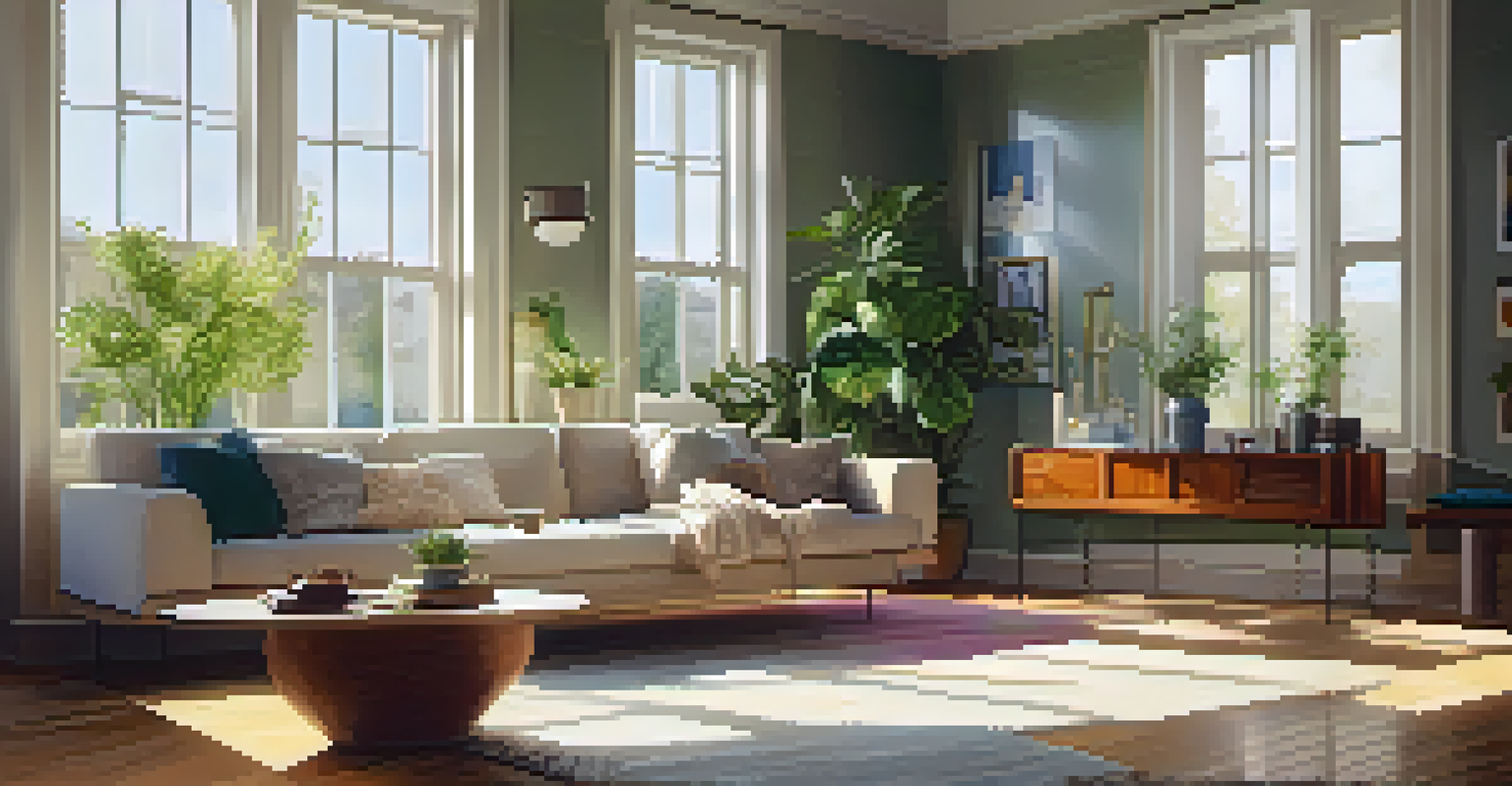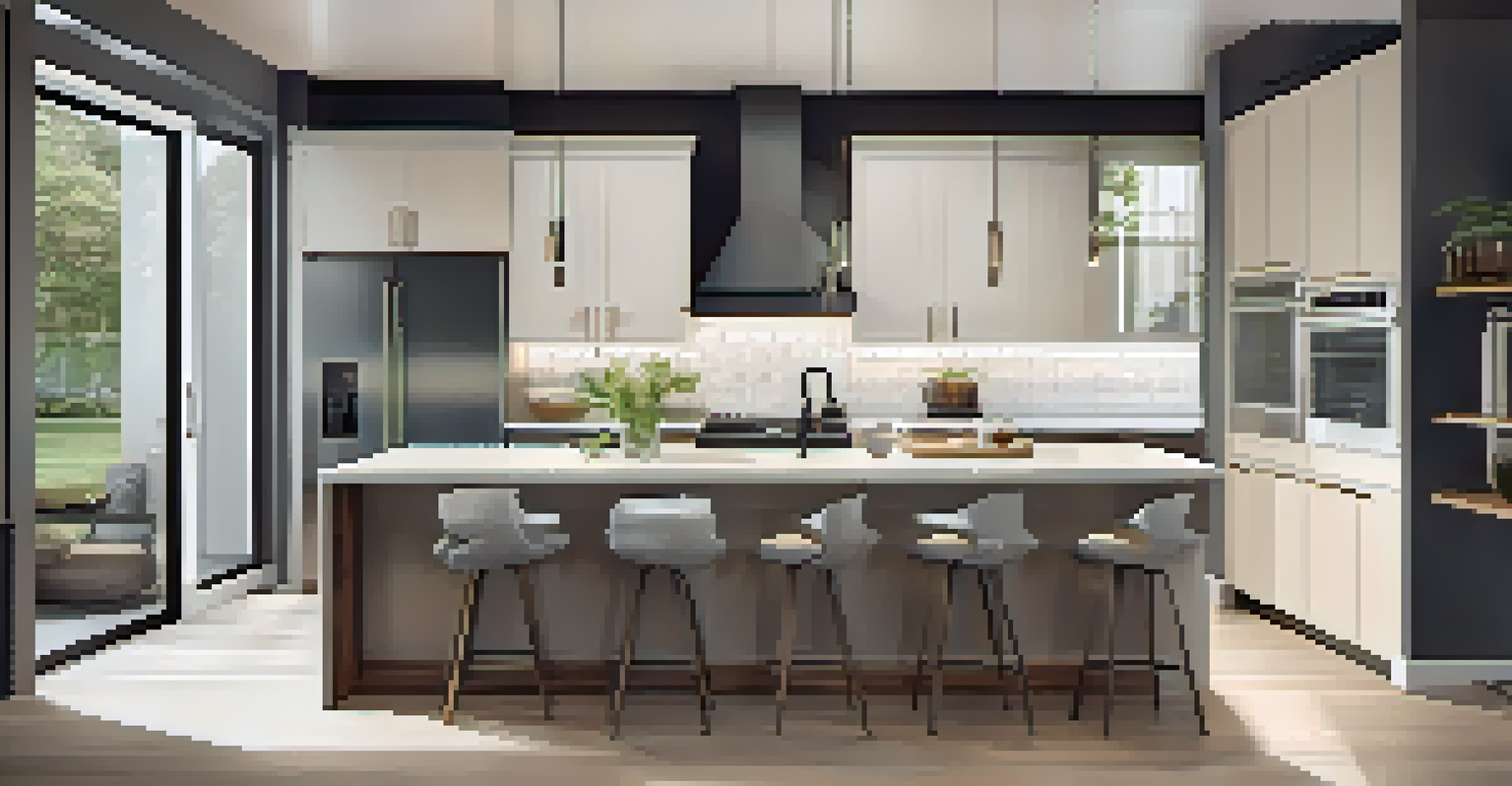Combining Functionality and Aesthetics in Lighting Design

Understanding the Basics of Lighting Design
Lighting design is more than just placing fixtures; it’s about creating an atmosphere. Proper lighting can transform a space, enhancing its beauty while serving practical purposes. Designers must consider various factors, including the type of light, its placement, and the intended use of the space.
Lighting is a way to make your home feel more welcoming and inviting.
For instance, a cozy restaurant might opt for warm, dim lighting to create an intimate setting, while a workspace may require bright, crisp lights to boost productivity. Understanding these basics helps designers select the right fixtures that not only illuminate but also complement the surroundings.
Ultimately, the goal is to harmonize functionality with aesthetics, ensuring that every light serves a purpose while contributing to the overall design narrative.
The Role of Natural Light in Design
Natural light is a powerful tool in lighting design, offering both aesthetic beauty and functional benefits. By maximizing daylight through strategically placed windows and openings, designers can reduce energy costs and create a vibrant atmosphere. This approach not only enhances the visual appeal of a space but also promotes well-being among its occupants.

Imagine a sunlit living room where light dances across the walls, making the room feel more alive. This is the magic of incorporating natural light, as it changes throughout the day, adding depth and character to the space.
Lighting Design Creates Atmosphere
Effective lighting design goes beyond mere illumination; it sets the mood and enhances the beauty of a space.
However, balancing natural light with artificial sources is crucial. Designers must account for factors like glare and heat gain to create a comfortable environment that harmonizes both light sources.
Choosing the Right Fixtures for Your Space
Selecting fixtures is a critical step in lighting design, as they can serve both functional and aesthetic purposes. From chandeliers that serve as focal points to sconces that provide subtle illumination, the right choice can elevate a room's appearance. Consider both the style of the fixture and its intended function in the space.
Good lighting can enhance the beauty of a space, while poor lighting can ruin it.
For example, a sleek pendant light over a kitchen island not only provides necessary task lighting but also adds a modern touch to the design. It’s about finding a balance where each fixture enhances the room’s character without overwhelming it.
When choosing fixtures, consider the materials, colors, and shapes that resonate with the overall décor, ensuring a cohesive look that feels intentional and thoughtful.
Layering Light for Depth and Dimension
Layering light is a technique that adds depth and dimension to any space. By combining ambient, task, and accent lighting, designers can create a dynamic environment that meets various needs. This approach allows for flexibility, as different scenarios may require different lighting levels.
Imagine walking into a cozy living room with warm ambient light, a reading nook illuminated by a focused task light, and artwork highlighted by accent lighting. This layered effect not only enhances functionality but also invites exploration and engagement with the space.
Natural Light Enhances Well-Being
Incorporating natural light into design not only boosts aesthetic appeal but also promotes the well-being of occupants.
The key to successful layering is ensuring that each type of lighting complements the others. This creates a harmonious balance that enhances both the visual appeal and the utility of a room.
Color Temperature and Its Impact on Mood
Color temperature is an essential element in lighting design that influences the mood and feel of a space. Measured in Kelvin, it ranges from warm (yellowish) to cool (bluish) tones. Warm light can create a sense of coziness and comfort, while cool light can promote alertness and energy.
For example, a café might use warm light to create a welcoming atmosphere, encouraging patrons to linger, while a modern office may favor cooler tones to enhance focus and productivity. Understanding these nuances allows designers to manipulate mood through thoughtful lighting choices.
When selecting light sources, it’s vital to consider how color temperature aligns with the intended use of each space. This intentionality ensures that lighting enhances the experience rather than detracts from it.
Sustainability in Lighting Design Choices
Sustainability is becoming increasingly important in lighting design, with many designers opting for energy-efficient solutions. LED lights, for example, consume less power and have a longer lifespan than traditional incandescent bulbs. This not only reduces energy bills but also lessens environmental impact.
Incorporating smart lighting systems can further enhance sustainability, allowing users to control brightness and timing. This means lights can be adjusted according to need, minimizing waste and maximizing efficiency.
Sustainable Choices Matter
Opting for energy-efficient lighting solutions and smart systems contributes to sustainability while enhancing design integrity.
Ultimately, sustainable lighting design is about making conscious choices that benefit both the environment and the aesthetics of a space. It’s a win-win that aligns with modern values and enhances overall design integrity.
The Future of Lighting Design Trends
The landscape of lighting design is always evolving, with new trends emerging that blend technology with creativity. From smart home integrations to customizable LED options, the future promises exciting possibilities. Designers are now focusing on personalization, allowing users to tailor their lighting experiences to suit their lifestyles.
For instance, adjustable color temperatures and brightness levels can be programmed to change throughout the day, creating an adaptive environment that enhances well-being. This shift towards intelligent design reflects a deeper understanding of how lighting affects mood and productivity.

As technology continues to advance, the blend of functionality and aesthetics in lighting design will only become more sophisticated, offering endless opportunities for innovation and creativity.